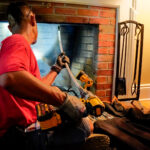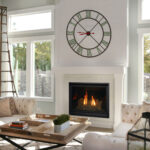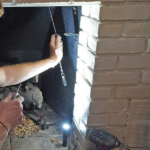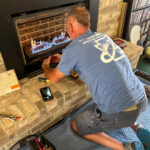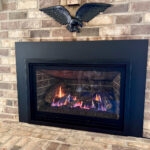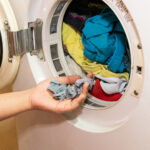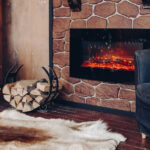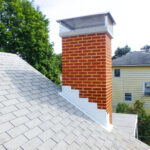When it comes to the colder months, there’s nothing quite as relaxing as gathering by an indoor fire to enjoy the warmth and ambiance. Many families use this time to bond, play games and enjoy time together, especially over the festive season.
Special, enjoyable moments like these can easily be ruined by a dirty chimney. Here’s how to tell when your chimney needs cleaning so you can address the issue and fix it before it gets worse.
1. The Room Fills With Smoke
One thing that can get everyone up on their feet and swatting their arms is a room filled with smoke, especially if it is thick, black and all-consuming. This isn’t only a huge inconvenience but can pose a health risk when inhaled. Chimney smoke can also cause strong odors that linger in the room and on your clothes.
If this happens, it may be a sign that the chimney needs cleaning. You may also want to check the quality of the wood to see if it’s wet, as this may also cause smoke, as well as the fire dying gradually and losing oxygen to maintain itself. Additionally, the damper could be closed when lighting the fire, so always check that it’s open beforehand.
A chimney cap installation helps prevent water from entering your chimney and causing potential moisture issues. The cap has a cover that goes over the top of the chimney to keep water out, but it doesn’t obstruct airflow because it has mesh siding.
2. Increased Soot and Creosote
Creosote is a highly flammable tar-like substance that accumulates on the inside of a chimney. It is generally created when combustion can not complete due to wet wood or cooler burning temperatures. This substance is the remains of burnt wood that builds up every time you use your fireplace. It is also commonly used in pesticides to help protect wood against termites. Too much creosote buildup can ignite at any point, leading to an uncontrollable fire spreading throughout your house or across your roof.
You might confuse soot and creosote, but there is a clear distinction. Though they are both byproducts of burnt wood, soot is thin, ash-like and tends to float around a fire or chimney flue. Creosote is stickier and burns away at higher temperatures, typically those over 250ºF or 121°C. With increased creosote, you’ll likely see an increase in soot when burning the fire because soot is the first byproduct of burning wood. It can be seen floating around and will settle and gather in the hearth, creating a hazardous mess.
3. Small Animals Get Trapped
If your chimney is clogged, small animals — like rodents — could get trapped inside. They won’t be able to make their way out because the flue is laden with creosote and soot, making a passageway out almost impossible. Eventually, when a fire is lit, they’ll die of smoke inhalation. This can be prevented by regularly checking and cleaning your chimney.
If they’re not trapped, you could spot a bird nesting in your chimney or close to the rain cap because they are attracted by the heat the chimney provides. A dirty chimney might not produce as much smoke on the outside since the downdraft is directing it inside the house, creating a better environment for birds to nest outside or even along the chimney walls.
4. You Struggle to Keep the Fire Going
When you light the fire, you might find that it dies quickly or more frequently. This is due to the lack of oxygen in the chimney because of the buildup of creosote blocking the flue. Cleaning your chimney will resolve this issue, and you’ll enjoy a fire that lasts without consistently setting it alight or adding more fuel.
5. The Damper Is Black
Creosote leaves evidence in more ways than one. When the damper is black, it is due to the creosote buildup over time. Ideally, you should have a professional clean the damper, flue and other chimney parts to ensure the creosote is thoroughly removed.
6. Visible Oily Marks on Your Fireplace Walls
Another sign to know if your chimney needs cleaning is if you notice visible oily marks on the fireplace wall. It may allude to the presence of excess creosote, leaving oil residue as it burns. Inspect your fireplace and its surroundings often to note any changes or red flags that could indicate a larger issue.
Factors That Affect Buildup In Your Chimney
There are a few factors that affect creosote buildup that you should keep in mind, as it may help you identify the signs you need chimney cleaning services: 
-
- Inside chimney vs. outside chimney: Chimneys built outside tend to create more creosote buildup than those built indoors because of the difference in airflow and flue temperature. An exterior chimney wall is exposed to temperature fluctuations, meaning the cooler the flue is, the quicker smoke condenses. This encourages creosote buildup at a faster rate than chimneys that are inside. There also tends to be more buildup in a wood stove than in an interior chimney for a similar reason. 
- Frequency of wood burning: The more frequently you burn wood in your fireplace, the more creosote and soot are produced, leading to a buildup in the chimney. This may require a chimney cleaning sooner than later to prevent any issues.
- Inspect the rain cap for buildup: It may be worthwhile for you or a professional to check your rain cap for evidence of creosote buildup that’s been trapped beneath.
- When to clean your chimney: Ideally, you should clean your chimney once a year during spring. Obtain firewood in spring since it is not too dry or moist to burn and still has time to mature for when you’re ready to use it. However, if you notice any signs that your chimney needs cleaning, you may consider doing it in the summer or fall.
Contact Anderson’s Chimney & Masonry Services for Your Next Chimney Clean
You might not think cleaning your chimney is important, but it could have serious implications if you avoid it altogether. It may have been hard to do yourself previously, leaving you with doubts about doing it again. That’s a thing of the past with the professional, highly-effective chimney sweeping and cleaning services we offer at Anderson’s Chimney & Masonry Services.
We use Poultice Creosote Remover (PCR) to get rid of the toughest, glazed creosote by absorbing it as it dries, making it easier for the hardened product to be removed. You will have peace of mind knowing your chimney is clean, and you’ll be free to create wonderful memories at the fireplace with your family without worrying about smoke and soot filling the room.
Call us at (717) 975-3526 or give us more information about the service you need, and we’ll get back to you.


